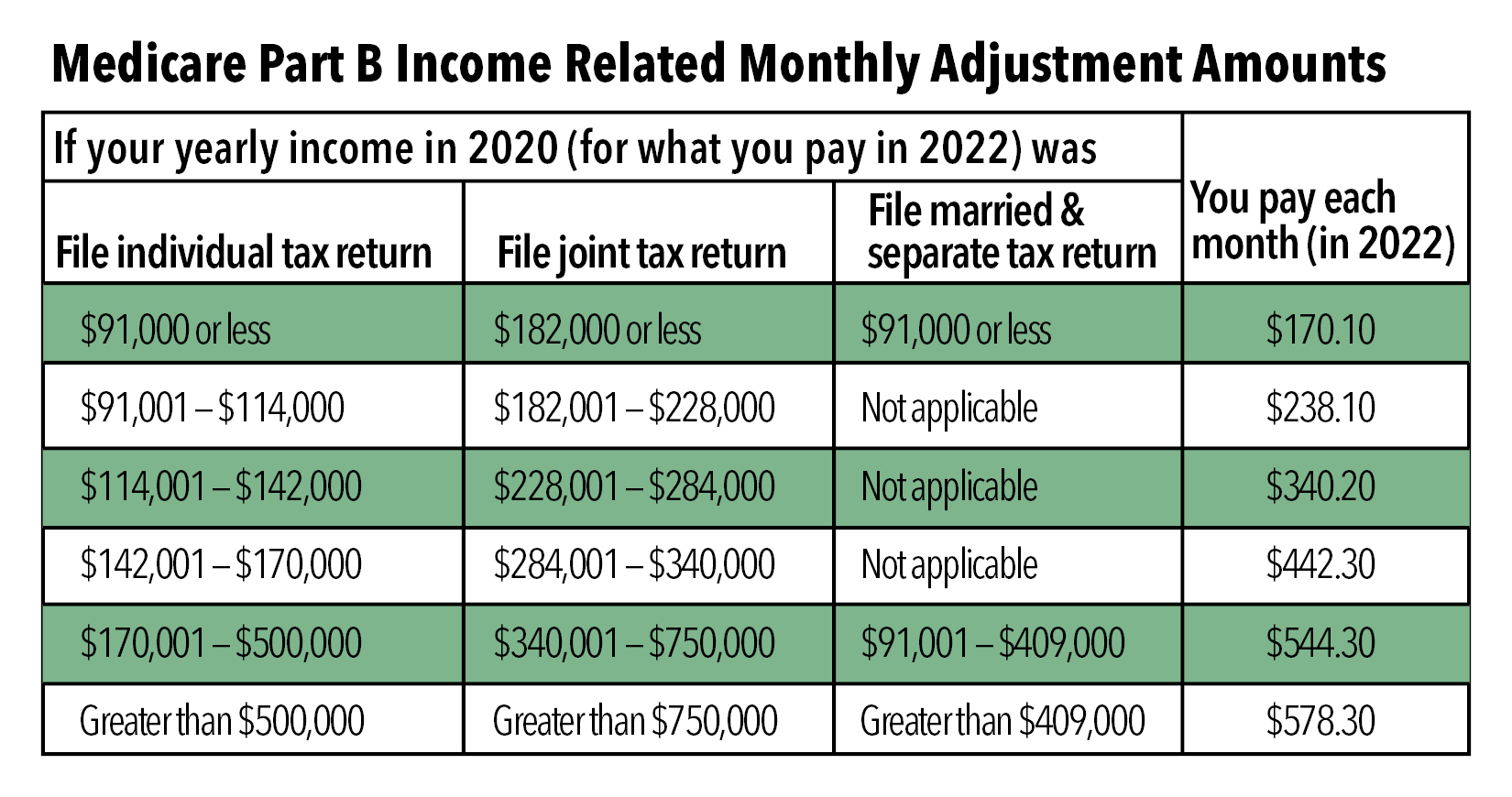As a new year quickly approaches, now is a good time to review the upcoming changes across several areas that affect financial planning. IRA and retirement plan contribution limits, Medicare premiums, and Social Security cost of living adjustments are all experiencing changes for the 2022 calendar year. We have compiled the specifics here to help you start thinking about how these changes fit within your overall financial life plan.
IRA Contribution Limits
The maximum amount you can contribute to a Traditional IRA or a Roth IRA in 2022 is $6,000 (or 100% of your earned income, if less), which is unchanged from 2021. The maximum catch-up contribution for those age 50 or older remains an additional $1,000. You can contribute to both a Traditional IRA and a Roth IRA in 2022, but your total contributions cannot exceed these annual limits.
Traditional IRA Income Limits
The income limits for determining the deductibility of Traditional IRA contributions in 2022 have increased. If your filing status is single or head of household, you can fully deduct your IRA contribution up to $6,000 in 2022 if your modified adjusted gross income (MAGI) is $68,000 or less (up from $66,000 in 2021). If you’re married and filing a joint return, you can fully deduct up to $6,000 in 2022 if your MAGI is $109,000 or less (up from $105,000 in 2021). Note that these figures assume you are covered by a retirement plan at work. For those age 50 or older the maximum contribution is $7,000.
If you’re not covered by an employer plan but your spouse is, and you file a joint return, your deduction is limited if your MAGI is $204,000 to $214,000 (up from $198,000 to $208,000 in 2021) and eliminated if your MAGI exceeds $214,000. Single filers, head-of-household filers, and married joint filers who are not covered by an employer plan can generally deduct the full amount of their contributions.
Roth IRA Income Limits
The income limits for determining how much you can contribute to a Roth IRA have also increased for 2022. If your filing status is single or head of household, you can contribute the full $6,000 to a Roth IRA if your MAGI is $129,000 or less (up from $125,000 in 2021). And if you are married and filing a joint return, you can make a full contribution if your MAGI is $204,000 or less (up from $198,000 in 2021). Again, contributions cannot exceed 100% of your earned income. For those age 50 or older, the maximum contribution is $7,000.
Employer Retirement Plans
The most significant change in 2022 for employer retirement plans is an increase to deferral limits. The maximum amount you will now be able to contribute (your “elective deferrals”) to a 401(k) plan is $20,500 (up from $19,500 in 2021). This limit also applies to 403(b) and 457(b) plans as well as the Federal Thrift Savings Plans. If you’re age 50 or older, you can also make catch-up contributions of up to an additional $6,500 to these plans in 2022. (Special catch-up limits apply to certain participants in 403(b) and 457(b) plans.) The amount you can contribute to a SIMPLE IRA also increased to $14,000 in 2022, and the catch-up limit for those age 50 or older remains $3,000.
The maximum amount that can be allocated to your account in a defined contribution plan (for example, a 401(k) or profit-sharing plan) in 2022 is $61,000, up from $58,000 in 2021, plus age 50 or older catch-up contributions. This includes both your contributions and your employer’s contributions.
If you have any questions about these new 2022 contribution limits, please contact your JNBA Advisory Team.
Medicare and Social Security Adjustments
The Centers for Medicare & Medicaid Services (CMS) has announced the new supplemental Part B and prescription drug Part D premiums for calendar year 2022, which are detailed in the tables below. The 2022 standard Part B premium has increased to $170.10/month on average (or higher, depending on your income) from $148.50/month in 2021.
The Social Security cost of living adjustment (COLA) is 5.9 percent for 2022, which in most cases should cover the roughly $22 increase in premiums for Part B.




Visit www.medicare.gov or www.ssa.gov for additional information.
PLEASE NOTE: JNBA is neither an attorney nor accountant, and no portion of the above should be construed as legal or accounting advice. All legal and accounting issues should be addressed with the legal and accounting professionals of your choosing.
Due to various factors, including changing market conditions and/or applicable laws, the content may no longer be reflective of current opinions or positions. Moreover, you should not assume that any discussion or information contained in this blog serves as the receipt of, or as a substitute for, personalized investment advice from JNBA Financial Advisors, LLC.
Please see important disclosure information at www.jnba.com/disclosure



